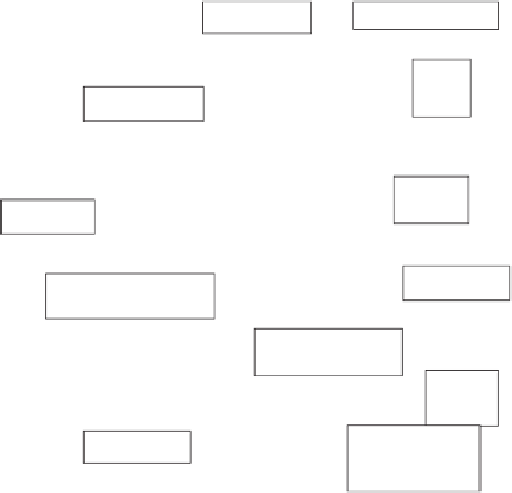Agriculture Reference
In-Depth Information
Surface N fertilizer
Budburst
4 to 5
leaves
Dormancy
Root N
uptake
Harvest
Flowering
N movement into fruit
and storage
N movement into
shoots and fruit
Fruit
set
Fertigation from
flowering to
early veraison
Veraison
Figure 3.13
Grapevine nitrogen (N) uptake and N fertilizer application
in relation to physiological stages of growth and development.
(Redrawn from Goldspink and Howes, 2001.)
Root growth lags behind shoot growth from bud burst to the fourth or fifth leaf
stage. During this period, N stored in the roots and trunk is mobilized and there is
little uptake from the soil. After that, N uptake from the soil predominates as root
growth accelerates to reach a peak midway between flowering and veraison. Thus
some N should be supplied to the vine at or soon after bud burst by surface appli-
cation, because the soil is normally too moist for fertigation then. Depending on
the N status of the vines, more N fertilizer can be applied, preferably by fertiga-
tion,afterloweringanduptoveraison.AnadequateNsupplyduringthisperiod
has the most influence on juice N and, ultimately, the success of fermentation (see
“Balancing the Nitrogen Supply”).
Bunches are the main accumulators from veraison to harvest, with most of the
N coming from remobilization within the vine and only a minor portion coming
from the soil. Particularly in warmer regions, there is a postharvest period of root
growth during which N is taken up from the soil. During this period, much N is
also translocated from leaves and shoots to the roots and trunk, where it becomes
a reserve for early shoot growth the following season and has an important influ-
enceonsubsequentvinefruitfulness.IftheNstatushasbeenwellmaintainedup
to harvest, fertilizer is not needed postharvest when there is a greater risk of nitrate
leaching by autumn and early winter rains.




